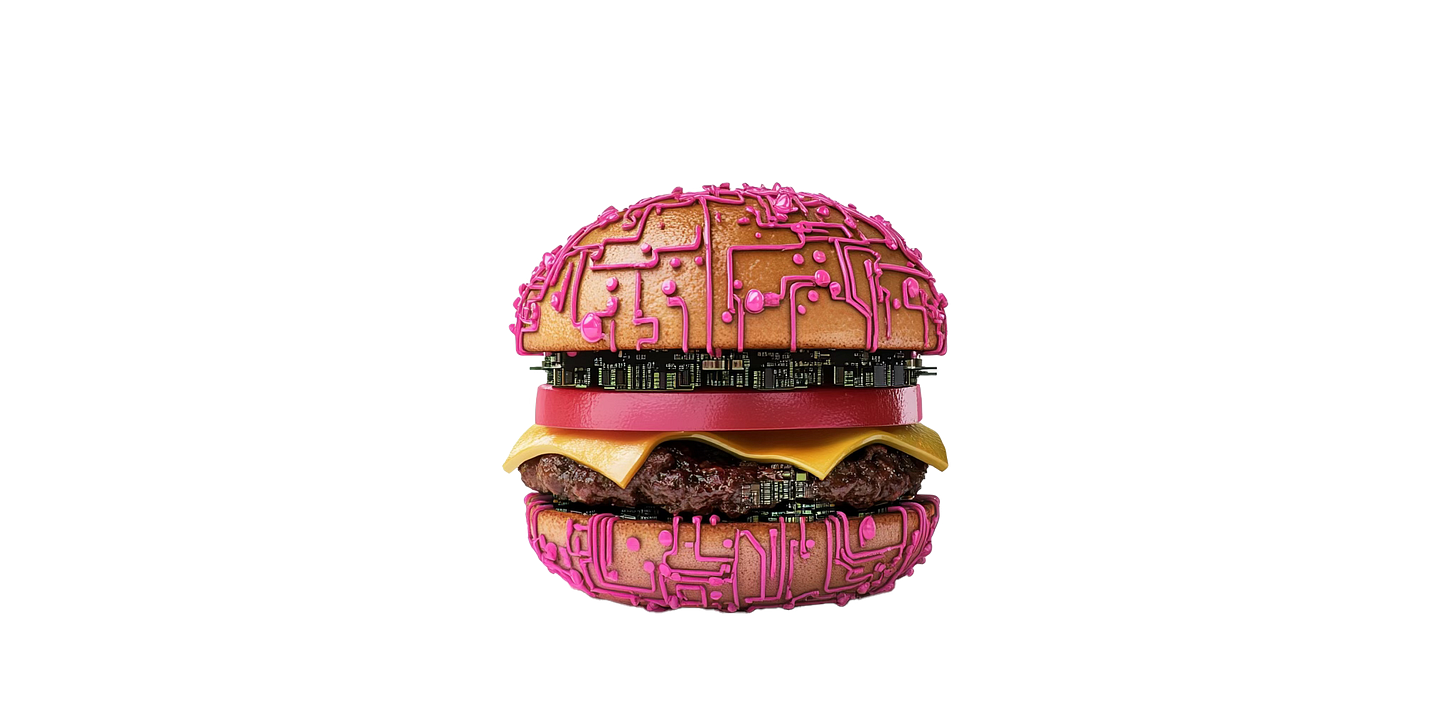280 McNuggets, please
Why you need to know the difference between generative AI and analytical AI
Imagine pulling up to McDonald’s drive-thru, hungry for a quick meal, only to find yourself pleading, “Stop! Stop! Stop!” as the AI ordering system keeps adding Chicken McNuggets to your order - eventually reaching 280 pieces. This isn’t science fiction; it happened at one of McDonald’s drive-thrus in 2024, leading the company to end its three-year AI experiment.
 Tiktok failed to load.
Tiktok failed to load.Enable 3rd party cookies or use another browser
This high-profile failure wasn’t just about a malfunctioning system - it was a result of a fundamental misunderstanding of which type of AI to use for which task. While McDonald’s competitors like White Castle and Wendy’s succeeded with their AI ordering systems, McDonald’s approach failed because it relied on the wrong kind of artificial intelligence.
What went wrong? The solution was surprisingly simple: McDonald’s competitors got it right by using the right tool for the job. While McDonald’s AI system tried to engage in open-ended conversations with customers (leading to those endless McNugget orders), successful implementations at White Castle and Wendy’s used specialised AI systems designed to do one thing well: recognise specific menu items and process orders accurately.
This is where most businesses today stumble. Caught up in the ChatGPT hype, they reach for generative AI when traditional analytical AI would do the job better. It’s like using a Swiss Army knife to hammer a nail when you have a perfectly good hammer in your toolbox.
(I shared the above video in another newsletter, demonstrating how generative AI is inferior to more traditional algorithms - in this case, the chess-playing Stockfish.)
In McDonald’s case, the ideal solution was staring them in the face. Speech recognition and order processing isn’t a creative task - it’s a pattern recognition problem. Traditional analytical AI excels at exactly this: taking specific inputs (customer voice orders), matching them against known patterns (menu items), and producing consistent, accurate outputs (order details).
Know Your AIs
Understanding the differences between AI types isn’t just academic - it’s crucial for practical business success. Let’s look at what each type of AI does best, and you’ll see why using the right tool for the right job makes all the difference:
Analytical AI excels at:
Pattern recognition (like spotting fraudulent transactions in banking)
Data-driven predictions (like forecasting equipment failures)
Classification of structured data (like sensor readings)
Optimisation problems (like finding the best delivery routes)
Statistical analysis (like predicting customer behaviour)
Real-time decision-making (like quality control in manufacturing)
Generative AI is perfect for:
Content creation (like writing marketing copy)
Document comprehension (like analysing insurance claims or medical reports)
Language processing (like customer service interactions)
Creative tasks (like designing graphics)
Text transformation (like translation or summarisation)
Ideation and brainstorming (like product innovation)
Choose Your AI Wisely
Think of analytical AI as that methodical friend who always shows up on time, follows the rules to the letter, and would never dream of improvising your tax return. They’re fantastic with numbers and patterns but completely lost when reading between the lines of a complex document.
Generative AI, on the other hand, is like that friend who has read many books and is generally very smart but also experiments with illicit drugs, and you never know when. They can digest and understand thousands of documents with remarkable insight - just make sure to fact-check their conclusions.
So, how can your business avoid a McNuggets-scale mishap? Here’s a simple rule of thumb: use analytical AI if the task requires consistent, accurate decisions based on structured data. If it involves understanding context, creativity, or processing human language - consider generative AI, but with appropriate oversight.
Oh, and the most important thing to remember is that only some problems might benefit from AI-based solutions (generative or analytical). In many cases, more traditional IT solutions might be so much better. Ultimately, you wouldn’t use ChatGPT to calculate your tax return. Right? Right???






Hey Marek, I’ve sent you a DM with a great proposal for your newsletter. Would love for you to take a look when you get a chance!